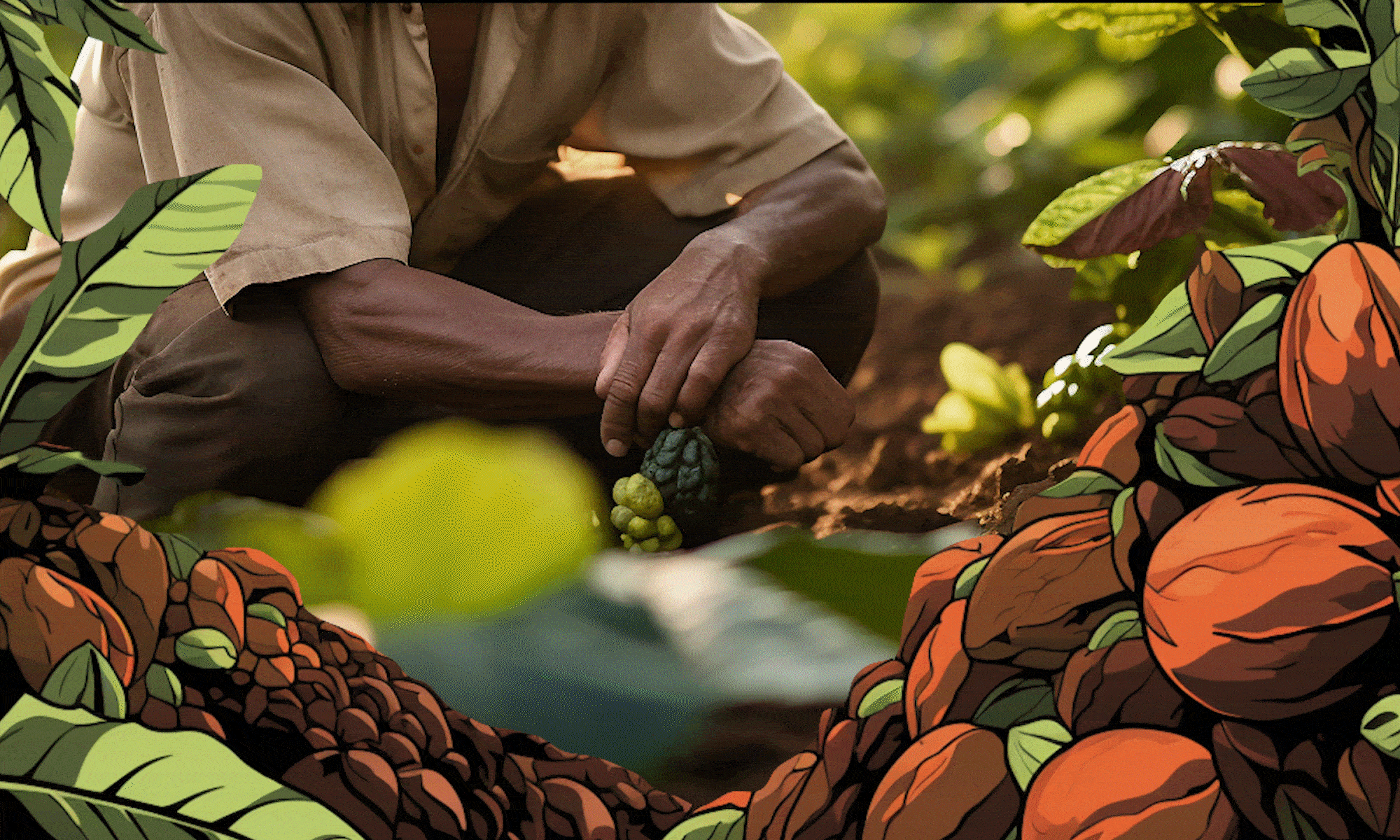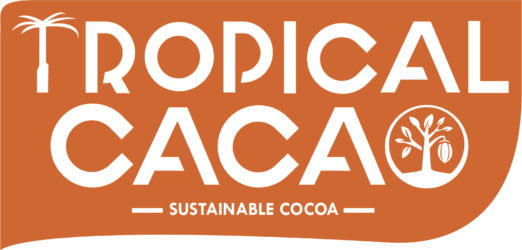The Ancient Secrets Hidden in Tropical Cacao
## The Sacred Origins of Chocolate
Long before chocolate became a global indulgence, tropical cacao held profound significance for ancient Mesoamerican civilizations. The Olmecs, Mayans, and Aztecs didn’t just consume cacao—they revered it as a divine gift carrying deep wisdom and power.
Archaeological evidence reveals cacao’s presence in human culture dating back more than 5,000 years. Ancient pottery vessels containing cacao residue tell us that the relationship between humans and this remarkable tropical plant has been evolving for millennia.
## Cacao as Currency: Value Beyond Taste
In ancient Mesoamerica, cacao beans served as currency—a literal form of “money growing on trees.” This economic role reflected cacao’s intrinsic value and scarcity:
– A turkey could be purchased for 100 cacao beans
– A avocado traded for 3 beans
– Services from skilled workers cost between 4-10 beans
This monetary use demonstrates how deeply cacao was integrated into ancient societies, representing both wealth and sustenance simultaneously.
## The Spiritual Dimension of Tropical Cacao
For ancient peoples, tropical cacao connected the physical and spiritual realms. Their wisdom recognized cacao as a sacred tool for:
### Divine Communication
Cacao ceremonies created spaces for connecting with deities and ancestors. The theobromine in cacao—a mild stimulant—kept participants alert during long ritual practices while inducing a gentle sense of euphoria interpreted as divine presence.
### Life Transitions
Major life events—births, coming-of-age ceremonies, marriages, and funerals—incorporated cacao to mark transitions and invoke blessing.
### Healing Practices
Ancient healers used cacao as medicine, understanding what modern science now confirms about its anti-inflammatory properties and cardiovascular benefits.
## Ancient Preparation Methods
The traditional wisdom of cacao preparation involved specific techniques that maximized both flavor and beneficial properties:
### Fermentation Wisdom
Ancient Maya developed fermentation techniques still used today, wrapping freshly harvested beans in banana leaves and burying them to undergo controlled transformation.
### Traditional Processing
After fermentation, beans were:
1. Dried under specific conditions
2. Roasted over open fires
3. Dehusked by hand
4. Ground on stone metates until smooth
### Sacred Recipes
Ancient cacao drinks differed dramatically from modern hot chocolate:
– Served at room temperature or cool
– Often spiced with chili, vanilla, or flowers
– Frequently unsweetened (sugar was unknown before European contact)
– Poured between vessels to create a prized frothy top
## Cacao in Ancient Cosmology
Cacao occupied a central place in ancient worldviews:
### In Creation Stories
Multiple Mesoamerican creation myths feature cacao as a gift from gods or as emerging from paradise itself. The Maya considered cacao trees as representing the axis mundi—the center of the world connecting different planes of existence.
### In Astronomical Alignment
Cacao planting often followed celestial observations, with farmers timing cultivation to lunar cycles and stellar movements.
### In Artistic Expression
Cacao pods appear consistently in ancient artwork, hieroglyphs, and codices—often associated with fertility, abundance, and divine blessing.
## Preserving Traditional Wisdom
Today’s tropical cacao farming communities maintain important connections to ancient wisdom:
### Sustainable Growing Practices
Traditional knowledge recognized that cacao thrives in biodiversity. Modern research confirms that shade-grown cacao in diverse forest settings produces superior beans while supporting ecological health.
### Heritage Varieties
Ancient farmers selectively bred cacao varieties for specific qualities. Modern conservation efforts focus on preserving these heirloom varieties that carry genetic wisdom developed over centuries.
### Cultural Continuity
In many regions, cacao harvest still involves ceremonies acknowledging the sacred relationship between people and this remarkable tropical plant.
## Traditional Knowledge for Modern Health
Ancient cacao wisdom anticipated many modern scientific discoveries:
### Heart Health
Pre-Columbian healers used cacao to strengthen the heart—a practice now supported by research showing flavanol-rich cacao benefits cardiovascular health.
### Mood Enhancement
Ancient users recognized cacao’s mood-elevating properties, understood today as the result of compounds that trigger endorphin and serotonin release.
### Anti-inflammatory Properties
Traditional healers applied cacao to reduce swelling and inflammation—effects modern science attributes to its antioxidant properties.
## Modern Applications of Ancient Wisdom
Today, we can integrate ancient cacao understanding with contemporary practices:
### Mindful Consumption
The ceremonial approach to cacao encourages slowing down to fully experience chocolate with all senses—a form of mindfulness practice.
### Quality Recognition
Ancient connoisseurs valued attributes in cacao that modern craft chocolate makers now champion: complexity, terroir, and proper preparation.
### Ethical Relationships
Indigenous wisdom around cacao emphasized reciprocity—taking from the land required giving back through care and gratitude.
## The Future of Tropical Cacao Wisdom
As interest in authentic food traditions grows, tropical cacao wisdom offers valuable insights:
### Biodiversity Preservation
Ancient cultivation methods that maintained forest ecosystems provide templates for sustainable chocolate production.
### Climate Resilience
Traditional growing techniques often demonstrate remarkable resilience to climate fluctuations—valuable knowledge as growing regions face climate change.
### Cultural Heritage
Preserving the cultural traditions around cacao helps maintain diverse knowledge systems developed through centuries of human-plant relationships.
## Experiencing Ancient Cacao Wisdom Today
You can connect with traditional cacao wisdom through several approaches:
### Seek Heritage Varieties
Look for chocolate made from ancient cacao varieties like Criollo or Nationale, which preserve genetic lineages known to ancient peoples.
### Support Traditional Growers
Choose chocolate from companies that work directly with indigenous communities still practicing traditional cultivation methods.
### Practice Mindful Tasting
Take time to experience chocolate fully—notice the complex flavors, the mouthfeel, the aroma. This sensory awareness connects you to how ancient people experienced cacao.
### Explore Ceremonial Cacao
Minimally processed cacao prepared specifically for ceremonial use offers a different experience than conventional chocolate—one closer to ancient traditions.
## Conclusion: The Continuing Journey of Cacao Wisdom
The wisdom embedded in tropical cacao traditions reminds us that this extraordinary plant is far more than just an ingredient. It carries millennia of human relationship, careful observation, and sacred connection.
When we approach tropical cacao with awareness of its rich history, we participate in a continuation of one of humanity’s most enduring plant relationships. The ancient secrets of cacao aren’t really secrets at all—they’re invitations to recognize the profound connections between plants, people, and planet that sustain us all.
By honoring the origins and traditional knowledge of tropical cacao, we ensure this wisdom continues to enrich human experience for generations to come—one mindful taste at a time.
—
*Interested in learning more about traditional cacao varieties and practices? Subscribe to our newsletter for monthly insights into the world of authentic tropical cacao.*
CACAO BUTTER BENEFITS
We have discussed the various products you can get from cacao and today we are going to talk about one of the most popular products and which is cacao butter. Cacao butter is also known as Theobroma oil. It is the vegetable fat that is extracted from cacao beans. Cacao butter is commonly known as cocoa butter, there is no difference between the two. So what benefits does cocoa butter provide to the end user? Let’s find out.
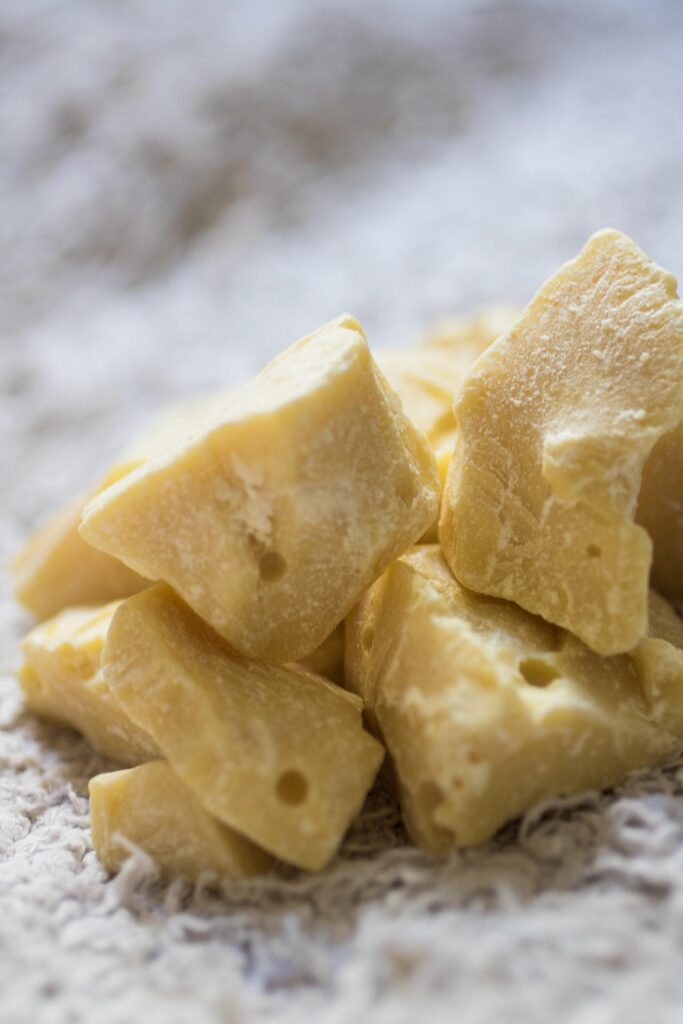
Cocoa butter prevents aging
Cacao butter is loved for its high concentration of antioxidants. Oleic acid, palmitic acid, and stearic acid are some of the fatty acids in cocoa butter that provide a layer of protection to the skin by neutralizing free radicals and reducing the occurrence of oxidative stress. They slow the development of wrinkles and keep your skin healthy all the time. Who wants to look old at these times anyway?
Cocoa butter improves cardiovascular health
Recent studies show that daily intake of cocoa has lowered the risk of heart diseases and premature deaths in the world. Cocoa butter has polyphenolic compounds that help lower the chances of hardening of the arteries. It also helps with fat metabolism and in turn, reduced chances of the risk of heart attacks
Cacao butter haircare benefits
Apart from its nice aroma, cocoa butter helps to moisturize your hair and produce healthier, stronger, and thicker hair follicles. It also ensures your scalp is healthy and therefore minimizes dandruff. Cacao butter reduces breakage, and dead and split ends. It has been proved to prevent onset patterns of male baldness.
Cocoa butter is a great skin moisturizer
If you struggle with dry and uneven skin, then you might have just found the solution. Cacao butter has a creamy texture and fatty acids that penetrate deep into your skin ensuring that your skin feels soft and healthy and is always hydrated. It also reduces scar appearances and aging effects on your skin.
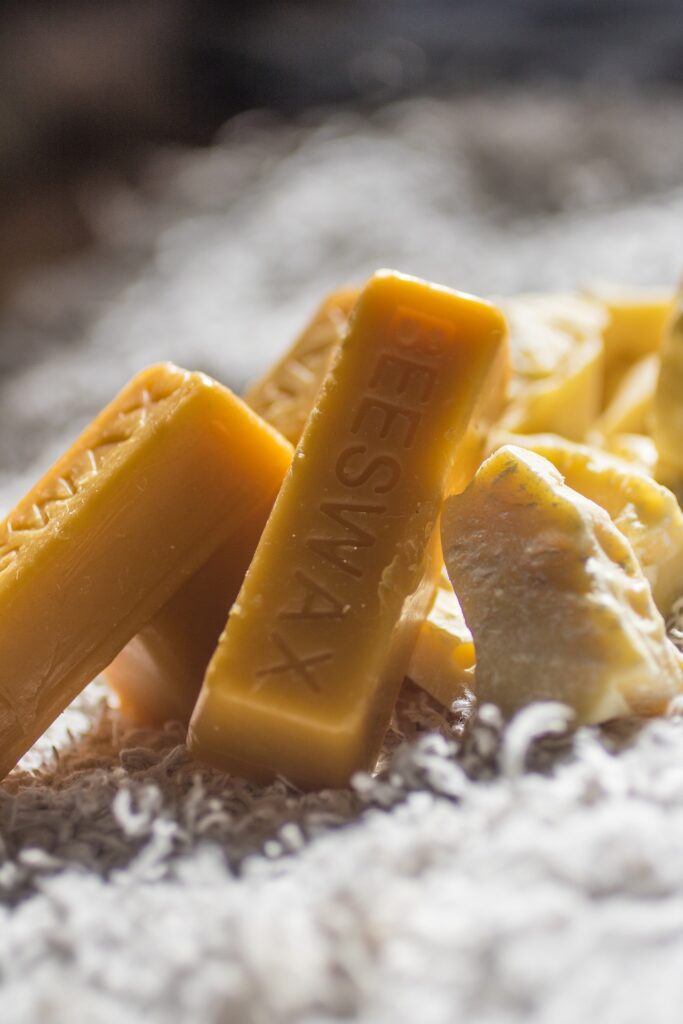
Cocoa butter has very many health benefits and when consistently used provides your body with amazing results. Get the best organic cacao from us today.
5 BEST WAYS TO USE CACAO POWDER
Let’s talk about the ceremonial grade cacao. This is the organic cacao we grow at Tropical Cacao and not the generic cacao powder you get from the grocery store. Ceremonial-grade cacao is 100% pure and rich in nutrients. So, how do you use cacao at home? There are so many ways in which you can use cacao but in this recipe, I will focus on 5 of my favorites. Read on!
BODY AND FACE ANTI-AGING SCRUB
If you are struggling with dead skin you will thank me after this. Cacao is packaged with anti-aging benefits. Using this simple cacao body scrub recipe will leave your skin nourished and feeling young.
- Mix 1 tablespoon of cacao powder
- 1 tablespoon of brown sugar
- 2 tablespoons of honey.
- Smear the mixture on your face and body and let it sit for 5 minutes.
- Rub your skin gently for 5 more minutes.
- Wash off with warm water and a clean washcloth.
- Follow that with your favorite moisturizer. Enjoy the feeling!
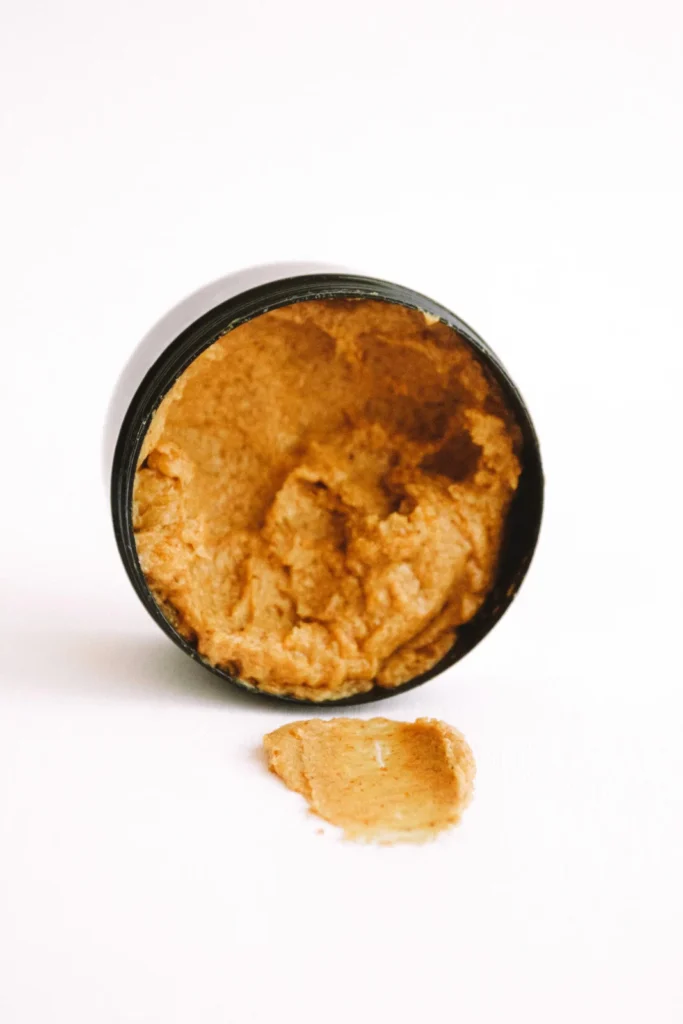
SAVORY SEASONING FOR MEAT
I don’t understand why your steak and roasts are so “plain” and you are doing nothing about it! Let me help you anyway.
- Add 2 tablespoons of instant finely ground coffee
- 1 tablespoon of cacao powder.
- ½ tablespoon of cinnamon.
- 1 tablespoon of salt
- 2 tablespoons of olive oil.
- Mix well
- Rub it on your meat
- Grill or cook as desired
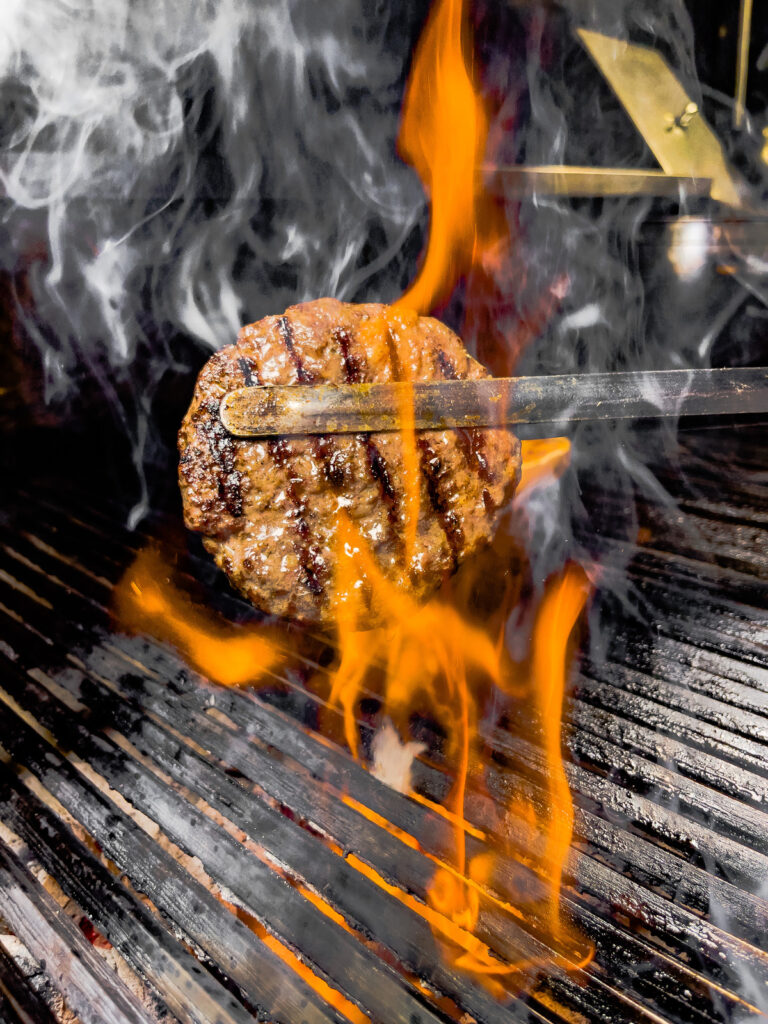
HOT CACAO DRINK
Cacao gives that “feel good” vibe, remember? Now imagine taking it every morning! Premium happiness throughout the day! There is a Swahili proverb that says, “Siku njema huonekana asubuhi” it simply means, a good day is seen/appears in the morning. I cannot think of a better way to start your day other than with a frothy cacao drink. Here is my recipe for a good day:
- Add a cup of milk (use any type of milk) Almond milk gives the best results though.
- ½ cup of water
- 3 tablespoons of cacao
- 2 tablespoons of honey
- Mix
Enjoy your creamy grade drink with your favorite accompaniments.
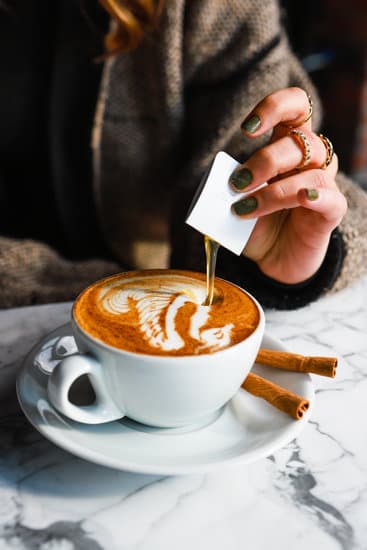
BAKING
If you like cakes, muffins, and brownies then you need good cacao in your pantry. That rich chocolate flavor takes your pastries from 1 to 10 really quick! There are versatile ways to make chocolate pastries and I will give you the assignment to find out about them.
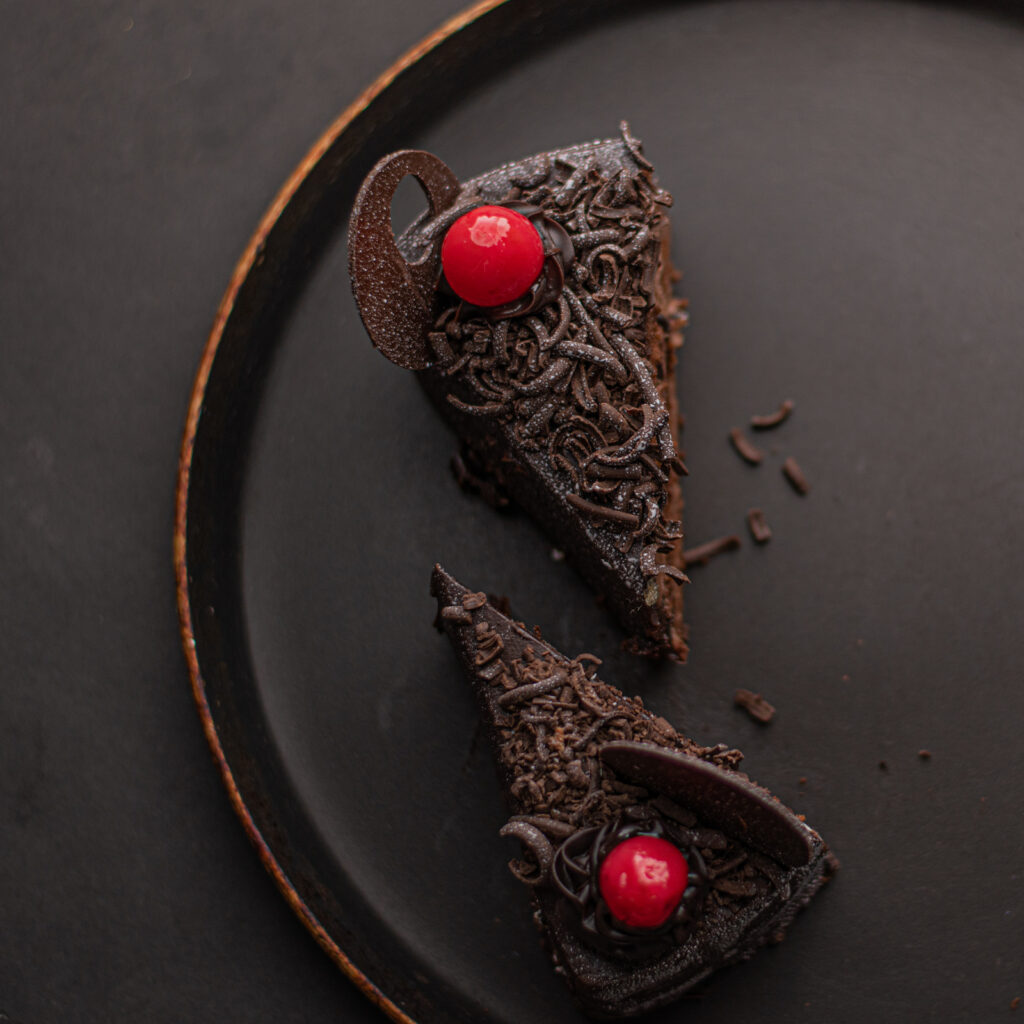
HOT CHOCOLATE SYRUP
I don’t know if you have been to an ice cream shop and you can’t help but stare at the mouth-watering delicacies! Especially those with chocolate toppings. Well, I was there too until I learned how to make the chocolate syrup I’m about to teach you. It’s easy to make and can be used as a topping for all your desserts.
- 2 tablespoons brown sugar
- 1 tablespoon white sugar (optional)
- 1 tablespoon ground cacao powder
- ½ tablespoon salt
- Mix
- ½ cup cold water
- Whisk until smooth
- Heat the chocolate mixture until it boils
- Stir occasionally while allowing it to simmer for at least 3 minutes
- Remove from heat
- Add vanilla and stir
- Serve warm and allow it to cool
- You can also save some in the fridge for later use!
- The thicker you want your chocolate syrup, the longer you will let it boil.
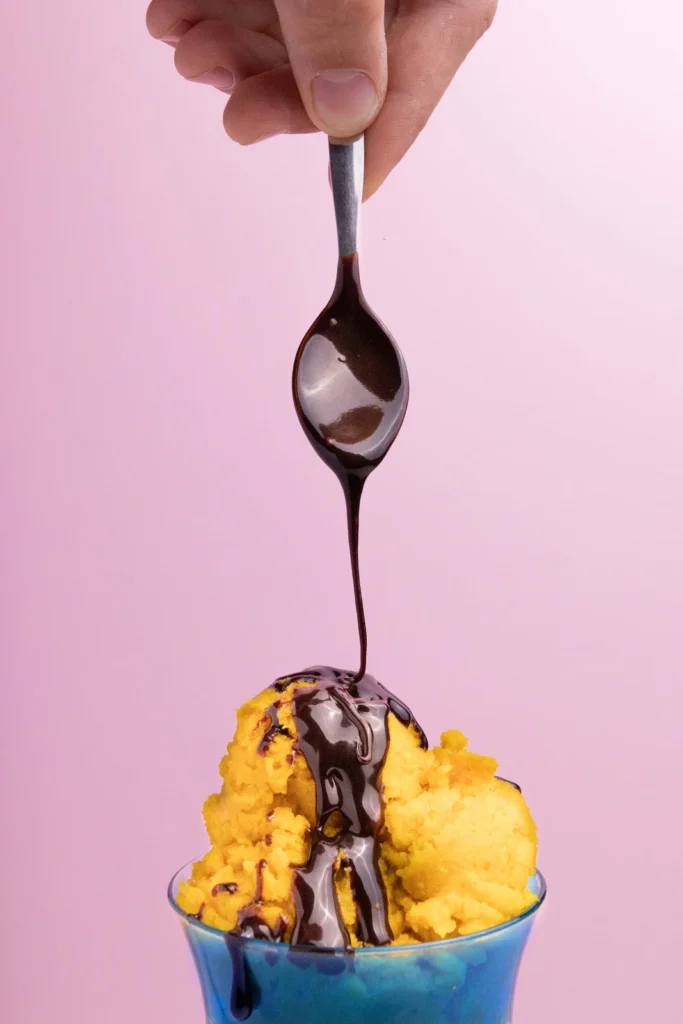
After that entire discovery, thanks to me and my research, you are now probably thinking of buying some cocoa to keep in your pantry and use. WE GOT YOU! What other place is better to buy organic cacao, cultivated using the best environmentally friendly methods other than at www.tropicalcacao.com?
WHY CHOOSE TROPICAL CACAO
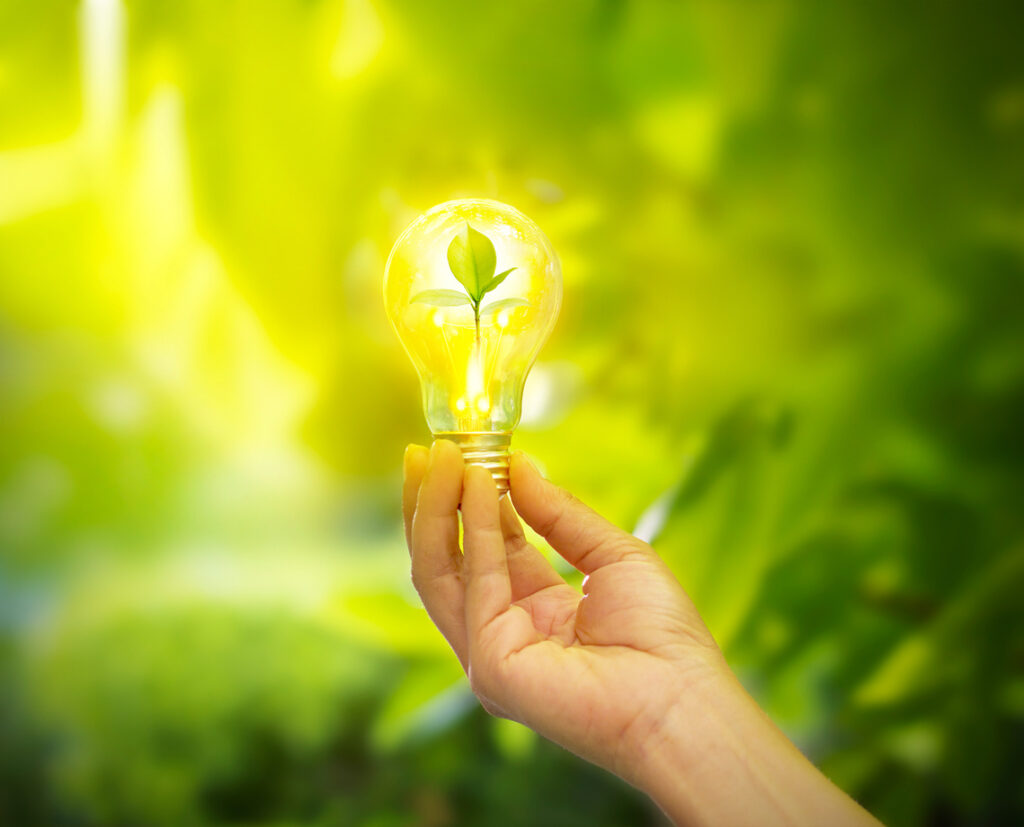
We not only serve market needs, but also community and environmental needs. We incorporate the best farming practices which are and economical, and environmentally friendly. Our vision is to build a resilient cacao production and manufacturing system.. We meet these needs by ensuring the following;
SOLAR POWERED IRRIGATION
We use energy and natural resources responsibly by watering trees with a solar-powered “Futurepump SF2” which is a renewable source of energy. This pump is made in Indian factory that uses an ISO 9001:2015-certified quality management system.

TAKING A STAND AGAINST CHILD LABOUR
We also ensure responsible human resources by employing laborers that are 18 years and above. WE DO NOT ALLOW CHILDREN TO WORK ON OUR FARMS.

SOIL FERTILITY ENHANCEMENT
Through the use of compost and animal manure, we produce cacao that is organic (free from chemicals and toxins) and rich in nutrients.
We also test soil regularly to keep up with the right acid levels. Enhancement of soil fertility also contributes to the production of quality cacao that has a competitive advantage in the market.
Cacao has very many health benefits but the use of inorganic fertilizers alters the final product which becomes dangerous to the consumer. We are here to ensure the world gets quality original product and value for their money.
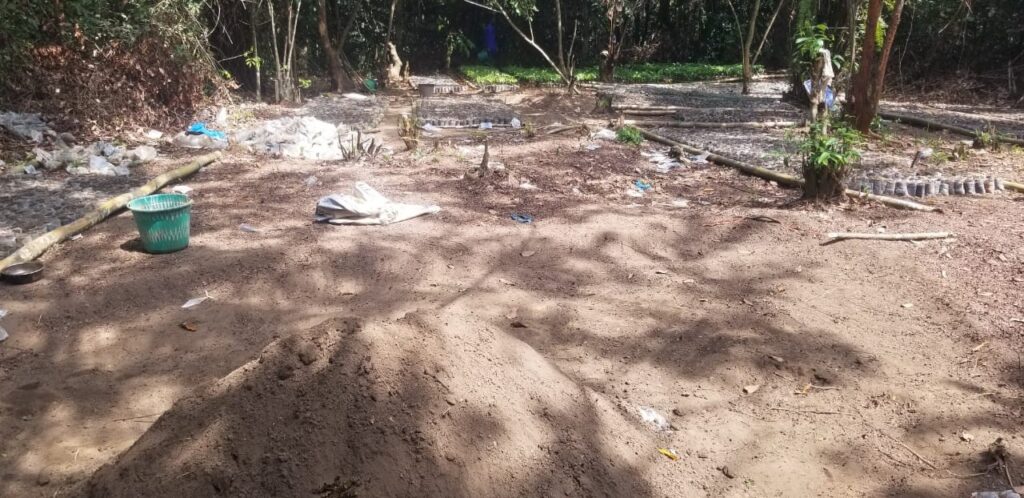
WATER QUALITY MAINTAINANCE
The cacao trees also known as Theobroma cacao are important water catchment amenities. They slow down rainfall and this prevents soil erosion and flooding. Cacao trees moreover collect and filter rainfall and slowly release it to the streams and rivers and this improves the quality of water consumed by the community. This also prevents diseases caused by the consumption of dirty water such as cholera and flood water such as bilharzia and malaria.
BIODIVERSITY MAINTAINANCE
Our cacao trees retain a complex canopy when grown which is significant in biodiversity. It acts as a habitat for plants and animals such as birds and ants. Which in return are sources of drugs and biological pest control agents. They also clean the air by taking in carbon dioxide.
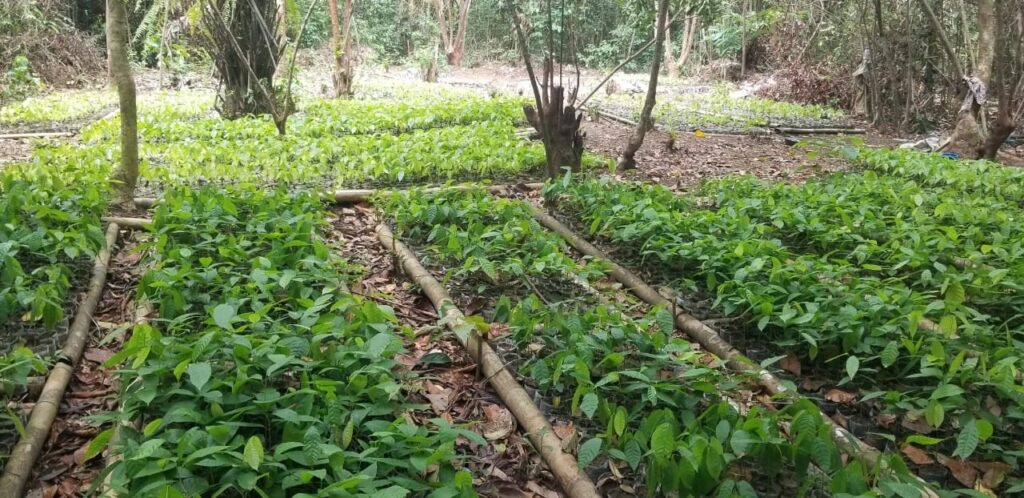
REGIONAL ECOLOGICAL BALANCE PRESERVATION
By integrating organic cocoa farming practices we enhance environmental and ecological benefits. The cacao canopy inhibits the growth of weeds hence reducing the need to use chemical herbicides that are harmful to not only humans but also plants and animals in these environments.
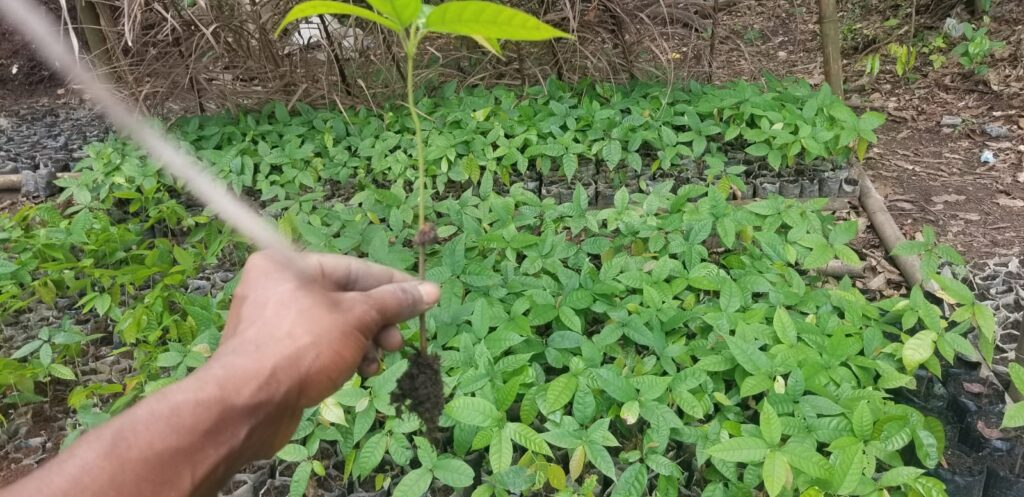
You get the best when you buy from the best. Our contact details are in the “Contact us” tab on the home page.
Thank you for choosing tropical cacao.
